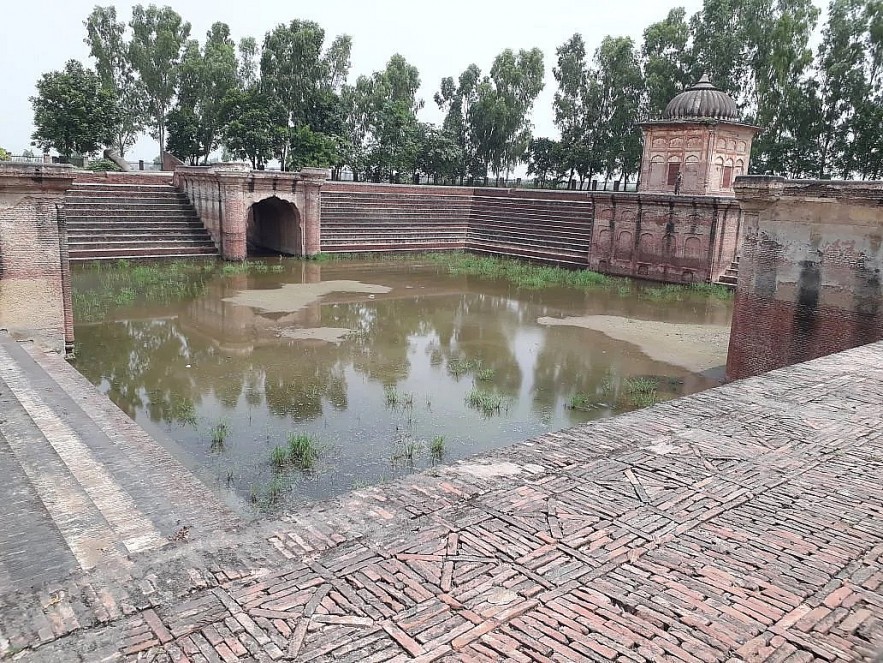 |
As the legend goes, Moran was a Muslim nautch girl from Kashmir who hailed from the small village of Makhanpur, located between Amritsar and Lahore. Maharaja Ranjit Singh was so captivated by her dance moves during a performance at the royal Baradari in Dhanoa Kalan Village that he gave her the name ‘Moran’, which is a Punjabi word for ‘peacock’.
There are many fascinating stories surrounding the two lovers, Maharaja Ranjit Singh and Moran. One of them tells of how, as Moran was on her way to the ‘Baradari’ (a pavilion for performances) one day, she accidentally dropped her silver slipper, a gift from the Maharaja, into the canal. She was so upset at the loss that she refused to dance that night, leaving Ranjit Singh distressed. In response, the Maharaja ordered that a bridge be built across the canal immediately, leading to the construction of the Taj Mahal of Punjab, or ‘Pul Kanjari’.
Delving a little deeper into history, it is said that the Maharaja of Amritsar frequently travelled between Amritsar and Lahore, so he had built a rest house (Baradari) about 35 km from Amritsar, close to the Wagah border. Moran, who was his favourite dancer, was sent for on such occasions for his entertainment. Since the bridge had been constructed for Moran, the locals started calling it ‘Pul Kanjari’, a derogatory term used for a dancer! Later on, it was agreed upon to change its name to ‘Pul Moran’ because the Maharaja subsequently married Moran, which technically converted her from being his concubine to a queen.
Ranjit Singh and Moran had three children, two sons and one daughter.
Apart from constructing the bridge, Ranjit Singh also built a ‘Sarovar’ (water tank), a Gurudwara, a Mosque, and a Shiva temple on the same premises. This reflects the King’s commitment to equality between all people, religions, and castes. In 1802, Ranjit Singh and Moran tied the knot in a grand ceremony, held in a ‘haveli’ in Amritsar. After the wedding, the couple moved to Lahore, where Moran had her own ‘haveli’ built by her husband in the ‘Papar Mandi’ area inside Lahore’s Shah Aalmi Gate. The couple blessed with three children, two sons and a daughter.
Interestingly, it is said that Moran was a close confidante and adviser to the Maharaja. She must have had impressive administrative acumen to be in that position. She proved her worth repeatedly and set up her court in the ‘haveli’ where she listened to the grievances of the commoners and soon, she was given the title of ‘Moran Sarkar’ by the locals. On her request, Maharaja also constructed a mosque close to her haveli – now called “Jamia Masjid Tarro Moran’. ‘Tarro’ is a Persian word meaning ‘revolving’. Moran’s earlier dancing fame had been numerous fast rotations, thus, giving the mosque its name.
Maharani Jind Kaur was an influential and powerful Indian queen, best remembered for being the wife of Maharaja Ranjit Singh and the mother of Maharaja Duleep Singh. She is also credited with the construction of the Shivala Temple in the Lahore Fort and a ‘Madrasa’ in 1823. Maharaja Ranjit Singh also got a series of coins minted between 1802 and 1827 called the ‘Moranshahi’. These coins featured a peacock feather, which was symbolic of his beloved wife.
The legacy of Moran is diverse and holds different meanings for different people. While some individuals give her derogatory titles such as ‘kanjari’ and ‘tawaif’ because of her profession as a dancer, there are other people who regard her as a generous queen that deserves respect and veneration.
Hence, it can be concluded that Sikhs are remembered for their bravery and valour as much as for their love. The incredible tale of Maharaja Ranjit Singh and Moran stands as a symbol of their unwavering devotion. The phrase ‘Pul Moran’ is a living proof of this unending admiration.



